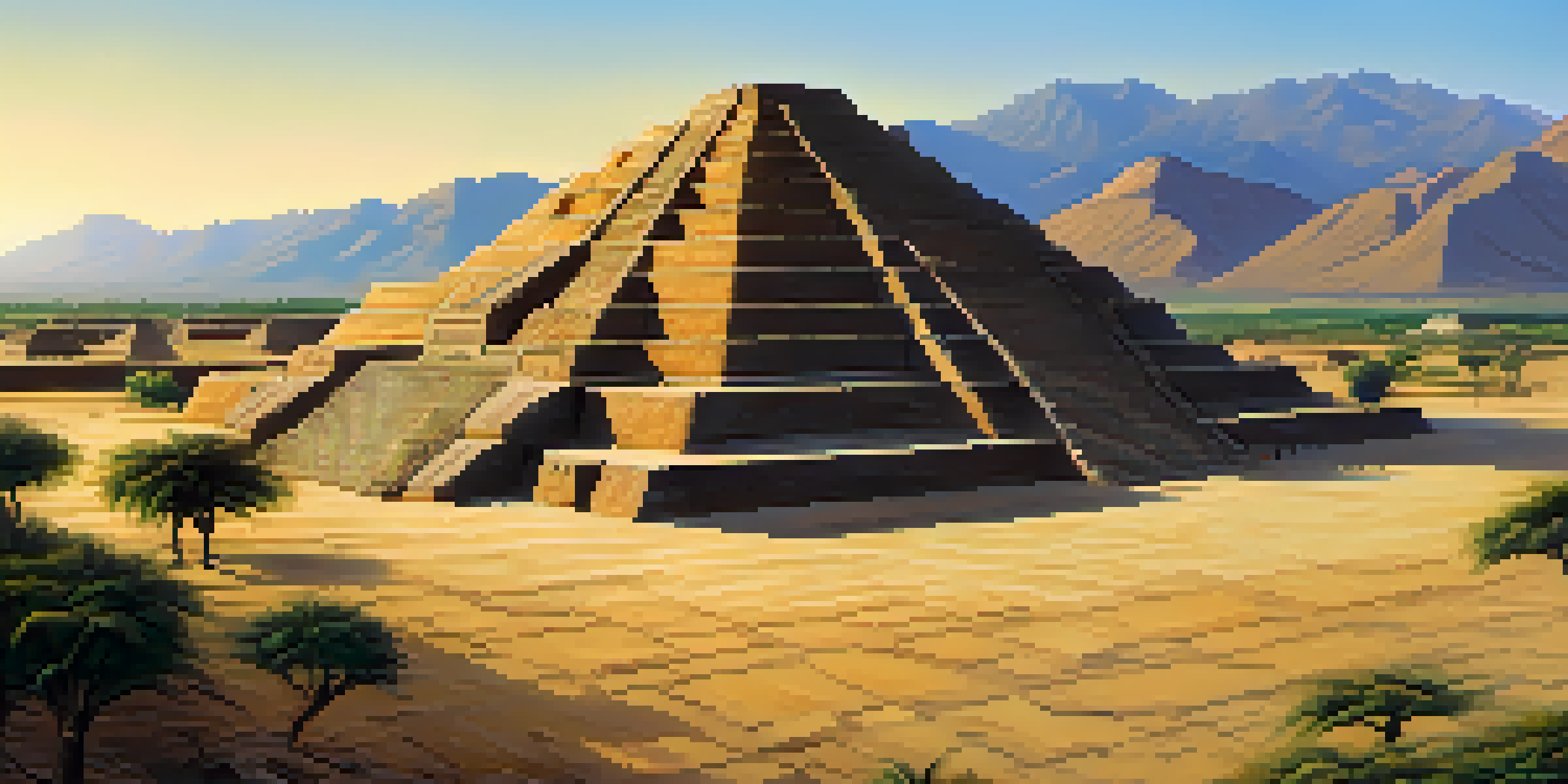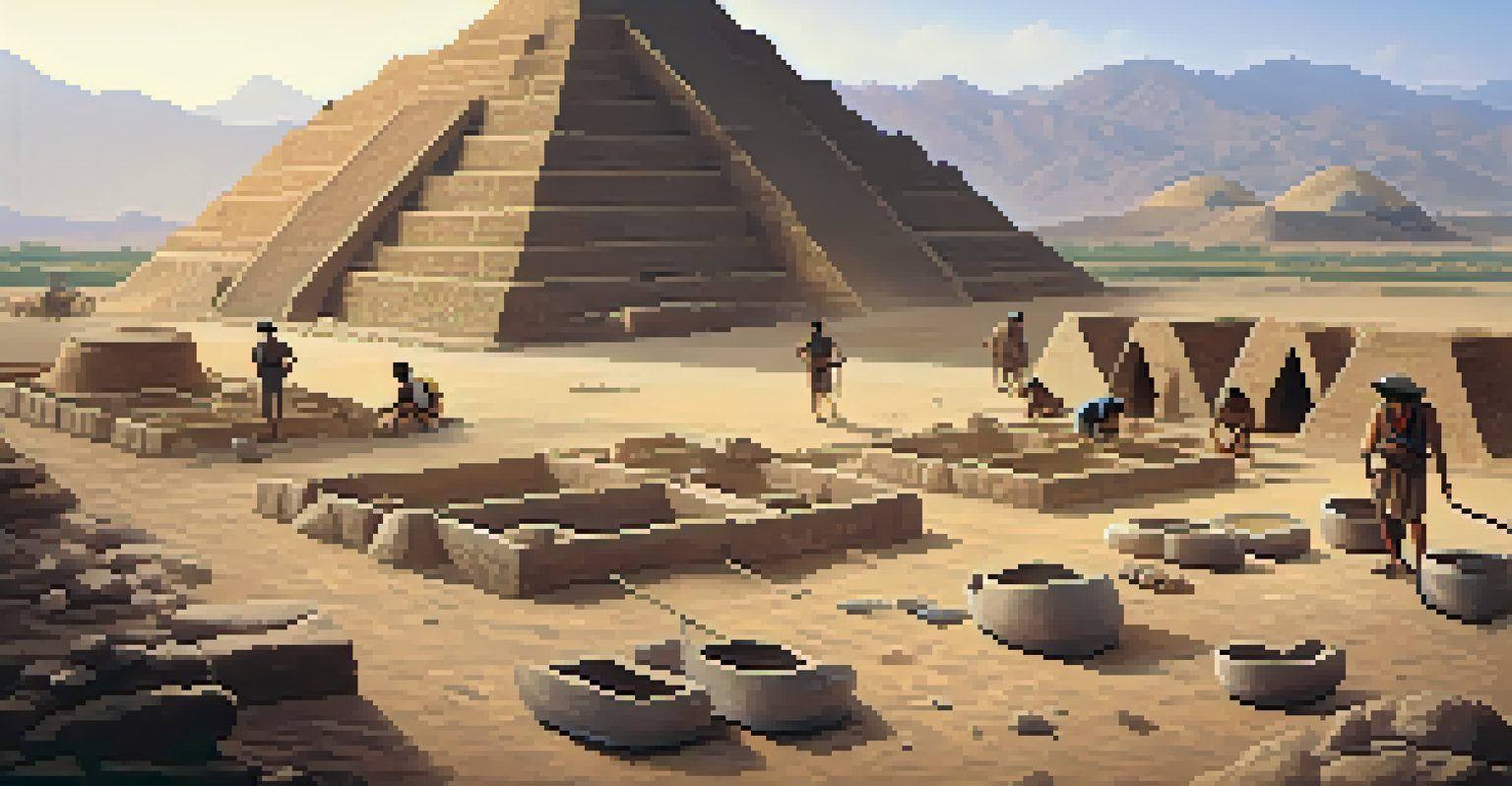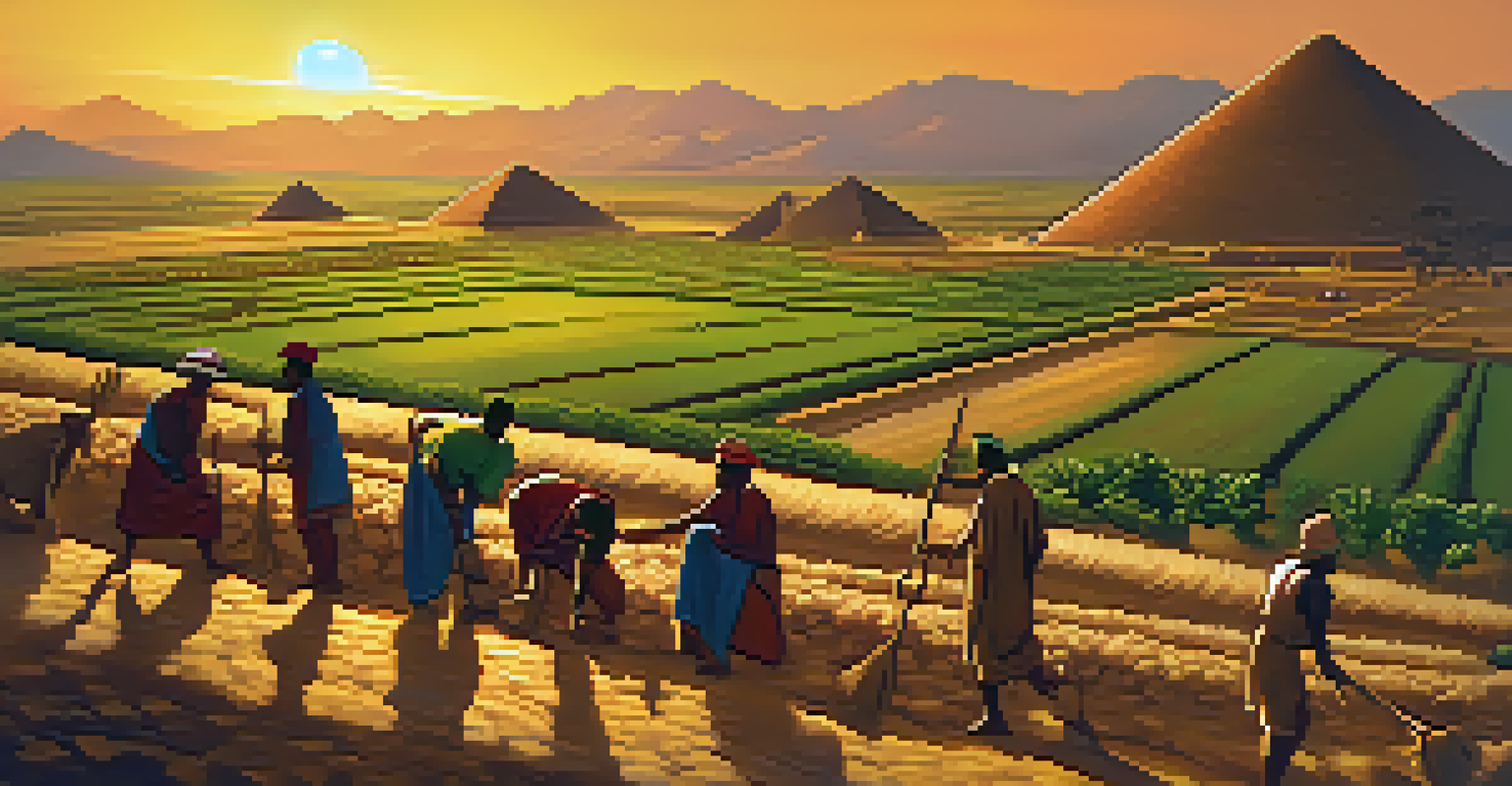The Ancient City of Caral: The Oldest Civilization in Peru

Introduction to the Ancient City of Caral
Caral, often referred to as the birthplace of civilization in Peru, is a remarkable site that dates back to around 3000 BCE. This ancient city, located in the Supe Valley, is considered one of the oldest urban centers in the Americas. With its impressive architecture and sophisticated society, Caral offers a glimpse into the lives of people who lived thousands of years ago.
Civilization is not a static thing. It is a dynamic process, always changing and evolving.
The significance of Caral extends beyond its age; it challenges the notion that complex societies only emerged in fertile regions. Instead, Caral thrived in a desert environment, showcasing innovative agricultural practices and social organization. This unique aspect of Caral highlights the adaptability and ingenuity of its inhabitants.
As archaeologists continue to study Caral, they uncover layers of history that reveal the rich cultural tapestry of ancient Peru. The city's complex layout, featuring pyramids and plazas, suggests a well-planned urban environment that catered to both religious and social activities.
The Architectural Marvels of Caral
One of the most striking features of Caral is its impressive architecture, which includes monumental structures made of mud and stone. The largest of these is the Pyramid of the Sun, standing about 18 meters tall, which showcases the engineering skills of its builders. These structures not only served as religious centers but also as gathering places for the community.

The layout of Caral is meticulously organized, with residential areas, agricultural fields, and ceremonial sites all interconnected. This thoughtful design indicates a society that valued both functionality and aesthetics. The use of natural resources, such as adobe bricks, demonstrates an understanding of local materials and building techniques.
Caral: A Civilizational Milestone
Caral is one of the oldest urban centers in the Americas, showcasing advanced society and architecture dating back to 3000 BCE.
Moreover, the city's architecture reflects the social hierarchy of its inhabitants. Temples and pyramids indicate the importance of religious practices, while the residential areas reveal insights into daily life. The architectural achievements of Caral set a precedent for future civilizations in the region, showcasing the evolution of urban planning.
Society and Culture in Caral
The society of Caral was marked by a complex social structure that included leaders, artisans, and farmers. Evidence suggests that the city had a centralized authority, likely a ruling class that organized labor and resources for large construction projects. This level of social organization indicates a sophisticated understanding of governance and community collaboration.
The past is not dead; it is living in us, and we are responsible for its legacy.
Cultural practices in Caral revolved around agriculture, trade, and religion. The fertile valley surrounding the city allowed for the cultivation of crops like cotton and beans, essential for sustaining the population. This agricultural surplus likely facilitated trade with neighboring regions, highlighting Caral's role as a commercial hub.
Religious rituals played a significant role in the lives of Caral's inhabitants. Archaeological findings, including ceremonial objects and art, suggest that the people engaged in sophisticated spiritual practices. These cultural elements contributed to a sense of identity and community among the residents of Caral, fostering social cohesion.
Agriculture and Economy of Caral
The economy of Caral was primarily based on agriculture, which was essential for the sustenance of its population. The inhabitants utilized innovative farming techniques, such as irrigation and crop rotation, to maximize agricultural output. This ability to cultivate crops in a challenging environment demonstrates their adaptability and knowledge of sustainable practices.
In addition to agriculture, trade played a vital role in Caral's economy. The city's strategic location facilitated the exchange of goods with neighboring cultures, enhancing its wealth and influence. Artifacts found at the site, including textiles and pottery, indicate a vibrant trade network that connected Caral to other ancient civilizations.
Innovative Agriculture and Trade
The inhabitants of Caral utilized innovative farming techniques and engaged in vibrant trade, which contributed to their economic prosperity.
The surplus generated by agriculture and trade allowed for the development of specialized crafts and arts. Artisans in Caral produced intricate textiles and tools, which not only served practical purposes but also held cultural significance. This economic diversity contributed to the city's longevity and cultural richness.
The Role of Religion in Caral
Religion was a cornerstone of life in Caral, influencing various aspects of daily existence. The presence of large ceremonial structures suggests that religious practices were central to the community's identity. Rituals likely involved offerings and ceremonies aimed at appeasing deities, reflecting a deep spiritual connection to their environment.
Archaeological evidence indicates that the people of Caral engaged in complex religious rituals, some of which may have included music and dance. These practices not only served a spiritual purpose but also acted as a means of social cohesion, bringing the community together in shared beliefs and traditions. The importance of religion in Caral's society cannot be overstated.
Moreover, the artistic expressions found in Caral, such as carvings and pottery, often depict religious themes. These artifacts provide insights into the spiritual beliefs and practices of the time, showcasing how deeply intertwined religion was with art and culture. Caral's religious life played a pivotal role in shaping its societal values and cultural legacy.
The Discovery and Excavation of Caral
The rediscovery of Caral in the 1990s marked a significant milestone in archaeological research in Peru. Led by archaeologist Ruth Shady, the excavation of this ancient city revealed a wealth of information about its inhabitants and their way of life. The site's preservation and accessibility allowed researchers to delve into the mysteries of Caral's past.
Excavations uncovered not only architectural wonders but also artifacts that shed light on the daily lives of the people. Tools, pottery, and textiles found at the site provide a glimpse into the skills and craftsmanship of Caral's artisans. These discoveries have significantly enriched our understanding of early civilization in the Americas.
Religion Shaped Caral's Society
Religious practices were central to Caral's community identity, influencing daily life, social cohesion, and artistic expression.
As archaeologists continue to study Caral, they face the challenge of preserving this invaluable site for future generations. The importance of Caral as a UNESCO World Heritage Site underscores the need for ongoing research and conservation efforts. The story of Caral is still unfolding, and each discovery adds to the rich narrative of Peru's ancient history.
The Legacy of Caral in Modern Times
The legacy of Caral extends far beyond its ancient ruins, influencing modern perceptions of early civilization in Peru. As one of the oldest urban centers in the Americas, Caral serves as a reminder of the advanced societies that predated European contact. This historical significance has sparked interest among scholars and tourists alike, contributing to cultural heritage and education.
In recent years, efforts to promote tourism at Caral have increased awareness of its importance as a cultural site. Visitors are drawn to the ancient city not only for its architectural marvels but also for the stories of resilience and innovation it represents. This influx of interest helps support local communities and fosters a sense of pride in their heritage.

Additionally, the lessons learned from Caral's sustainable practices have relevance today, as modern societies grapple with environmental challenges. The ingenuity and adaptability of Caral's inhabitants offer valuable insights into sustainable living, emphasizing the importance of respecting and preserving our natural resources. Caral's legacy continues to inspire and educate, bridging the past and the present.